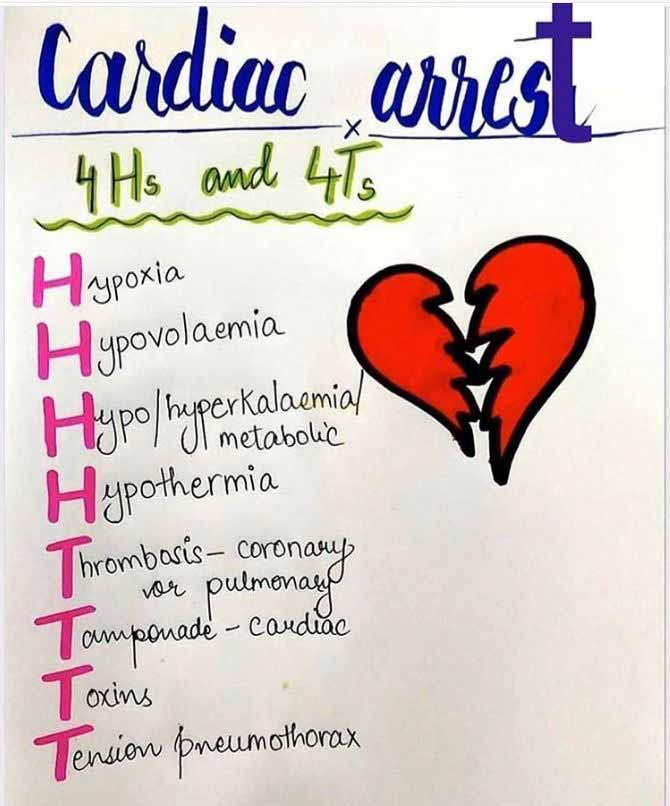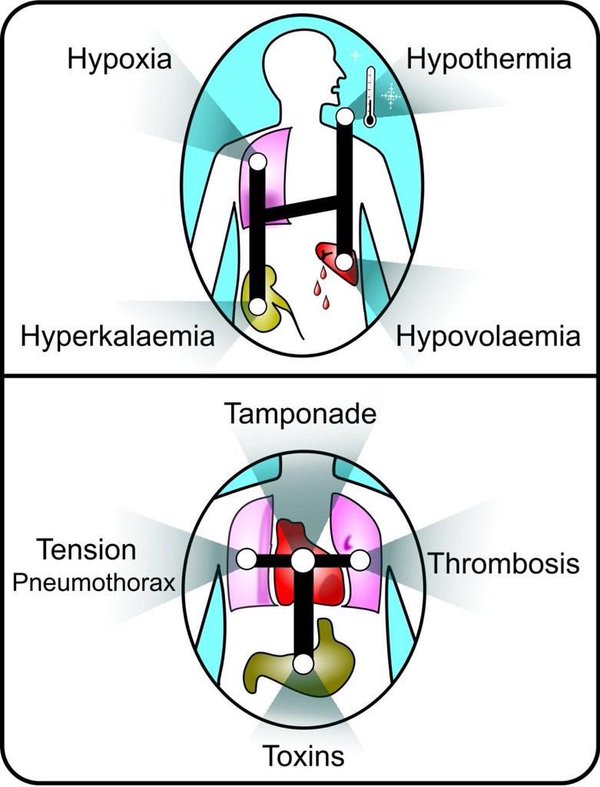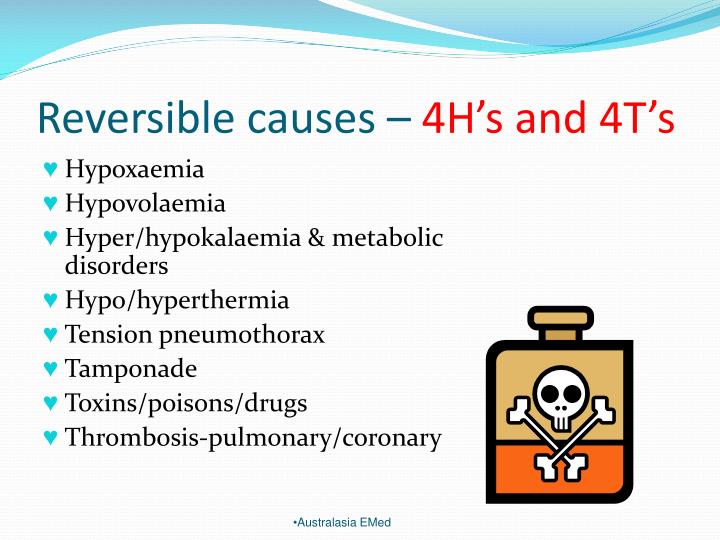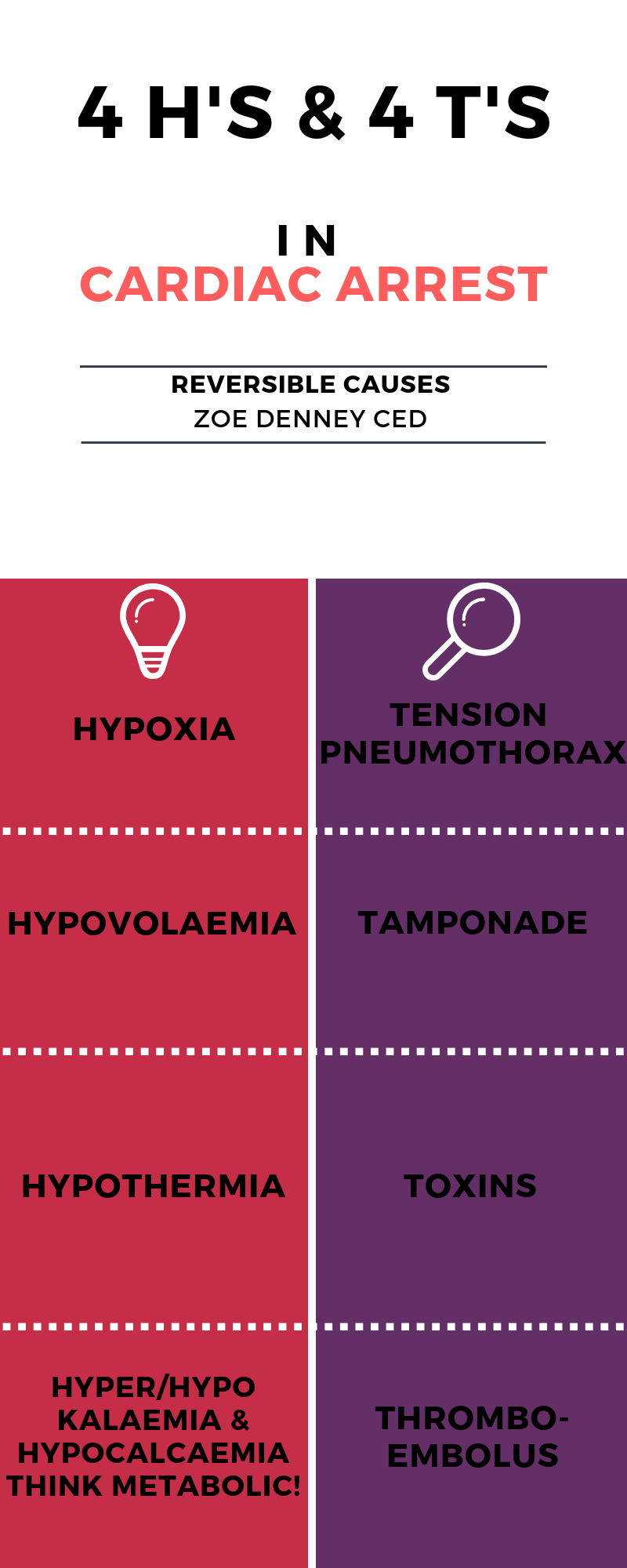
Cardio pulmonary resuscitation
Reversible causes of cardiac arrest 4 "Ts" and 4 "Hs" can be easily diagnosed and remembered following general ABC rule, Motol hospital approach CC BY-NC-ND 4.0 Authors: Miroslav Durila.

Underlying causes of PEA arrest H’s and T’s Hypovolemia, GrepMed
An insensitive melt-pour explosive to replace Composition B for Mortar Applications. IMX-104 and all starting ingredients manufactured at Holston Army Ammunition Plant. Exhibited superior IM properties and comparable performance over Composition B in 81mm Mortar HE. IMX-104 qualified as an main fill explosive in June, 2011.

Heparin Induced Thrombocytopenia (HIT) 4T Score The GrepMed
A useful mnemonic derived from the conditions shown in fig 1 causing a non-VF/VT cardiac arrest is the four Hs and the four Ts. Figure 1 Climbers in snowhole. Figure 2 Climber in spindrift. There are many cardiac and respiratory causes of severe hypoxia, which require emergency treatment of the underlying condition. Oxygen treatment in an appropriate dose should be administered where possible.

4Hs and 4Ts 4Hs and 4Ts 4Hs and 4Ts Hypoxia Absence of oxygen in the tissues to sustain body
The 4 H's and T's: How reliable is this mnemonic in classifying etiologies of in-hospital cardiac arrests? While out-of-hospital cardiac arrests (OHCA) are predominately due to coronary artery disease and other cardiac-related conditions, 1. the etiologies of in-hospital cardiac arrests (IHCA) are often more complex.

How to Memorize the H's and T's of ACLS Nursing School Studying, Nursing School Notes, Nursing
The Reversible Causes of Cardiac Arrest: 4 Hs, 4 Ts Cardiac arrest happens when the heart stops beating. When this occurs, the heart also loses its ability to pump blood throughout the body, thus interrupting blood flow. Cardiopulmonary resuscitation (CPR) and defibrillation are mainly the treatment for cardiac arrest.

What Are the H Causes of Reversible Cardiac Arrest
Administer IV isotonic or hypertonic fluids (with blood sodium ≤ 130 mmol L-1 up to 3x 100 mL NaCl 3%). Consider additional electrolyte replacement with isotonic fluids. Substantial amounts of fluids may be required. In exertional heat stroke, a cooling rate faster than 0.10°C min-1 is safe and desirable.

The 4Ts assessment tool for patients with suspected HIT Download Table
Reversible causes of cardiac arrest 4 "Ts" and 4 "Hs" can be easily diagnosed and remembered following general ABC rule, Motol University Hospital approach Miroslav Durila Open Access Published: March 12, 2018 DOI: https://doi.org/10.1016/j.resuscitation.2018.03.013

Cardiac Arrest H's and T's HYPOVOLEMIA HYPOXEMIA GrepMed
The reversible causes of cardiac arrest can be remembered by using the "Four Hs and Four Ts": H ypoxia (low levels of oxygen) H ypovolemia (shock) H ypokalemia/Hyperkalemia/Hypoglycemia/Hypocalcemia H ypothermia T hrombosis (coronary or pulmonary) T ension pneumothorax T amponade (cardiac) T oxins Hypoxia (Low Levels of Oxygen)

The 4 Hs And 4 Ts In Resuscitation & Sudden Cardiac Arrest Skills Training Group
4Ts Score for Heparin-Induced Thrombocytopenia Differentiates patients with HIT from those with other causes of thrombocytopenia. When to Use Pearls/Pitfalls Why Use Thrombocytopenia Platelet count fall >50% AND platelet nadir ≥20 +2 Platelet count fall 30-50% OR platelet nadir 10-19 +1 Platelet count fall <30% OR platelet nadir <10 0

Four Hs and Four Ts First aid for free
What are the 4 Hs and 4 Ts Flashcards Learn Test Match Q-Chat Get a hint Hypovelamia Click the card to flip 👆 Decreased blood volume, any heamorrhage? Click the card to flip 👆 1 / 8 1 / 8 Flashcards Learn Test Match Q-Chat Created by AdamJKemp Share Students also viewed 4 Hs & Ts - how can we tell and address 21 terms garciaj2404 Preview

PPT ARC ALS Guidelines UPDATE (2011) PowerPoint Presentation ID3222838
Reversible causes of cardiac arrest 4 "Ts" and 4 "Hs" can be easily diagnosed and remembered following general ABC rule, Motol University Hospital approach 2018 May;126:e7. doi: 10.1016/j.resuscitation.2018.03.013. 10.1016/j.resuscitation.2018.03.013 Heart Arrest / etiology*

(PDF) Reversible causes of cardiac arrest 4 “Ts” and 4 “Hs” can be easily diagnosed and
Recently, we have inquired about the origins of the mnemonic '4 Hs and 4 Ts' used to recall the reversible causes of cardiac arrest (CA).

4H's and 4T's in paediatric cardiac arrest PEM Infographics
Reversible causes of cardiac arrest: "4Hs and 4Ts" H ypoxia H ypokalaemia/hyperkalaemia H ypothermia/hyperthermia H ypovolaemia T ension pneumothorax T amponade T hrombosis T oxins You may also be interested in our guides to basic life support and the ABCDE approach to emergency management. Hypoxia

Hs and Ts mnemonic Easy Memorization for ACLS YouTube
The H's and T's of ACLS is a mnemonic used to help recall the major contributing factors to pulseless arrest including PEA, Asystole, Ventricular Fibrillation, and Ventricular Tachycardia.

Pin on office
T's: T ension pneumothorax (consider if trauma or previous attempts to insert a central venous catheter). T amponade (cardiac) - particularly in cases of trauma. T oxins or Tablets - consider reversal agents. See toxbase or the BNF. T hromboembolism (coronary or pulmonary) - consider thrombolytic drugs but these may take up to 90.

URGENCIAS Y EMERGENCIAS EXTRAHOSPITALARIAS Causas Reversibles PCR (Parada CardioRrespiratoria)
One of the recurring features in poorly managed scenarios was the failure to obtain and organise sufficient help for the tasks required. Since then we have encouraged the teaching of "four Hs and four Ts" in the initial approach to the management of life-threatening/arrest situations, i.e. "four Helpers and four Tasks".